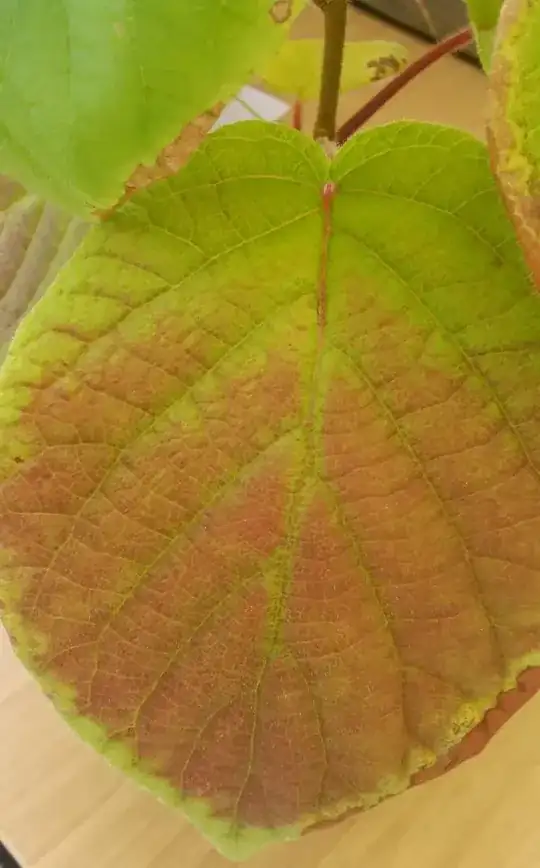I have grown a kiwi plant which is growing nicely in my office. Recently, some of it's leaves have developed a red hue.
What is happening here? Do I have to worry?

I have grown a kiwi plant which is growing nicely in my office. Recently, some of it's leaves have developed a red hue.
What is happening here? Do I have to worry?

The plant has a low concentration of chlorophyll in those leaves. This can be caused by a number of conditions, which I will list. For a more detailed answer, more details on the plant will be necessary.
To name some of the more prevalent ones. If you haven't been fertilizing, I would start with an all purpose liquid fertilizer, monthly during the growing season (applied as to the directions of the manufacturer). Keep the plant well watered during the main growing season, but do not allow the soil to sit in water. Allow the top inch of mix to completely dry between waterings over the winter. Do not water with salt softened tap water, or water from a chlorine purification system.
Whenever the roots circle the pot, remove the plant, shake some soil free, an replant in a pot 1 size up, using fresh potting mix. Alternatively, cut the longest roots back and replant in the same pot, using fresh mix. Also prune the top growth to balance.
Allow the plant to receive as much light as possible over the shorter days, and get it morning sun at least, during the summer. If the plant is moved outside during warm weather, place it in an area with full morning sun, and dappled afternoon sun, if you live in a hot area.
And keep an eye out for pests. Routinely check leaf undersides, stem bases, and when repotting, look through the roots. It's better to catch any pest before significat damage is apparent.